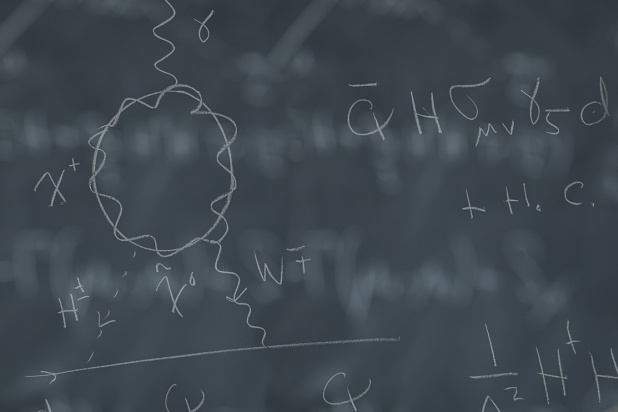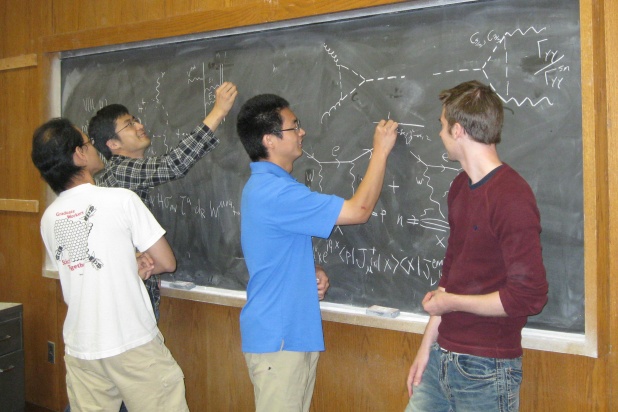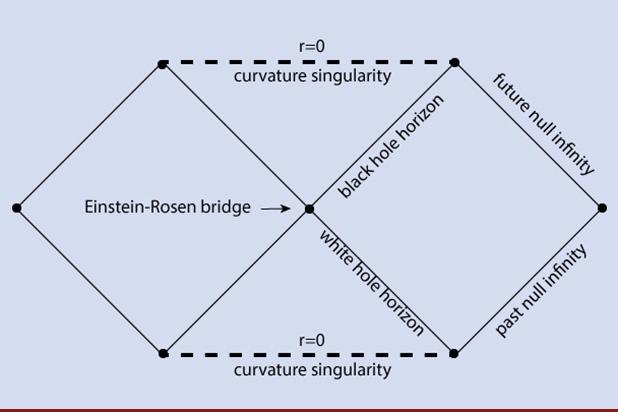Theoretical research at UMass Amherst addresses questions that span the energy, intensity and cosmic frontiers, including particle physics, nuclear physics, cosmology, and gravity.
- Why is there more matter than anti-matter in the present Universe?
- What is the nature of the dark matter and dark energy?
- What presently unseen forces were active during the first fraction of a second
after the Big Bang? - What can Black Holes teach us about the quantum nature of gravity?
- How does QCD build nucleons and nuclei out of quarks and gluons?
We investigate the phenomenology of the Standard Model to learn how strong interactions determine the properties of hadrons and nuclei and to understand what experiments can teach us about the physics of CP & flavor, the properties of the Higgs particle(s), the pattern of electroweak symmetry breaking, and the nature of neutrinos. We study scenarios for physics beyond the Standard Model, such as supersymmetry and extensions of the scalar sector, and identify their consequences for both the Large Hadron Collider and high sensitivity, low-energy experiments. This knowledge is used to explore possible scenarios for the generation of the cosmic matter-antimatter asymmetry and the prevalence of dark matter in the Universe.
Our research exploits the tools of effective field theories to understand the quantum properties of General Relativity at low energies. We study inflation to determine how our Universe was shaped and to learn about the physics of the very high energies relevant to the first fraction of second after the Big Bang. We inquire into the origin of gauge interactions — could they emerge from something completely different? — and ask what the Universe would be like if the value of fundamental parameters were allowed to change.
General Relativity (GR) describes gravity in a simple and elegant, but essentially classical way. We study gravity in both the classical and quantum regimes, asking whether GR may be deformed at low energies to account for cosmic acceleration, or extended to higher dimensions to mesh with string theory. Much of our work focuses on Black Holes. Understanding these "fundamental particles" of geometry is key both to gravitational model building and foundational questions regarding the nature of quantum mechanics and spacetime.
Group Members

Postdoctoral Research Associate
Distinguished Professor - Emeritus

Professor Emeritus
Assistant Professor

Professor Emeritus
Associate Head/Senior Lecturer II
Professor, Amherst College
Professor & Director, Amherst Center for Fundamental Interactions
For more information, visit the Fundamental Interactions Theory group website.





















